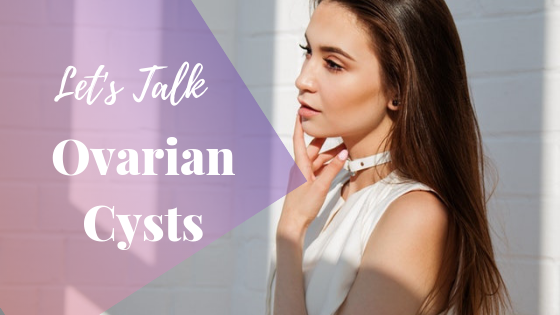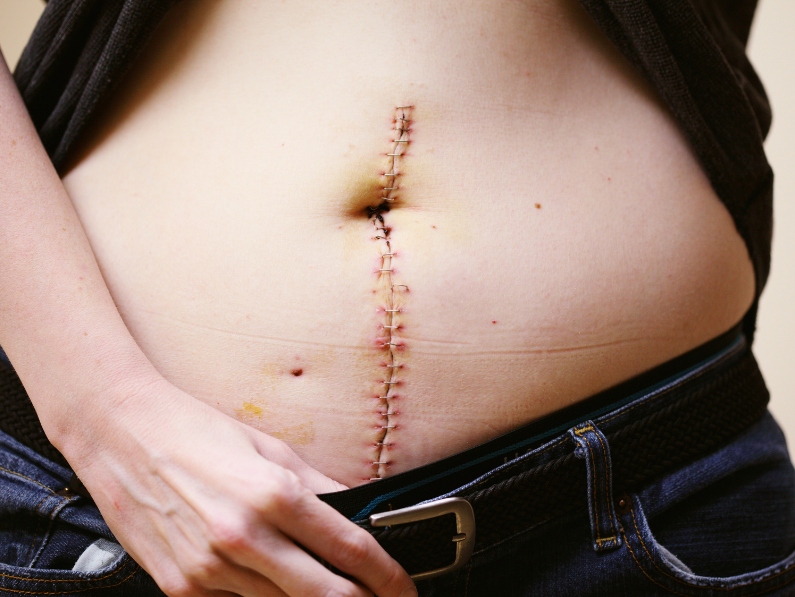Ovarian cysts are a reproductive health issue that many women have experienced. As a matter of fact, you’ve probably had an ovarian cyst and didn’t even know it. Most ovarian cysts occur due to irregularities during the menstrual cycle and cause no signs or symptoms. Additionally, they will resolve and shrink over a period of time and pose no major health risk. Whereas with more progressive ovarian cysts they cause disruptive symptoms and may decrease fertility. Being able to distinguish between simple ovarian cysts that cause no complications and complex ovarian cysts that lead to health complications is necessary.
Page Contents
What Are Ovarian Cysts?
Chances are you don’t know what I’m talking about and you’ve never heard of ovarian cysts. In that case, let me explain what ovarian cysts are. Simply put these cysts affect the ovary and are fluid-filled sacs that develop on the inside or outside of the ovary. When it comes to classifying different types of ovarian cysts there are two main classifications; functional ovarian cysts and complex ovarian cysts.

Functional Ovarian Cysts
These type of cysts occur due to irregularities during the menstrual cycle. These irregularities usually involve the follicles within the ovary not functioning as it should. Additionally, there are two types of cysts that can develop due to follicle dysfunction. The first is a follicular cyst. This type of cyst develops when the follicle fails to burst or release an egg during ovulation. Instead, the follicle continues to grow and forms a cyst. The second type of cyst is a corpus luteum cyst. In this case, the follicle releases an egg during ovulation but fluid buildup occurs within the follicle. This leads to the development of a cyst.
In the majority of cases concerning functional cysts, they do not pose a risk to your health or fertility. They remain small and in rare cases may cause minor pain and discomfort. Yet, over a period of time, these cysts resolve and shrink.
Complex Ovarian Cysts
When it comes to complex ovarian cysts these types of cysts deal with underlying issues. These issues rarely have any link to malfunction of the follicles within the ovary. Similar to how there are different types of functional cysts there are also different types of complex cysts.

Dermoid Cysts
Another name for dermoid cysts are teratomas, and they are formed from embryonic tissue. Contents that can be found within these cysts are tissue, skin and in some cases teeth. Generally, they are noncancerous and have little to no impact on fertility and reproductive health.
Cystadenoma
A complex cyst that develops on the surface of the ovary. Ovarian tissue, watery fluid or mucus is commonly found within these cysts.
Endometrioma
In this case, the development of an endometrioma is related to an underlying condition known as endometriosis. This condition causes endometrial tissue to grow and develop outside of the uterus. The fallopian tubes, ovaries, bladder, bowels, and organs in the pelvis are normally affected by this condition. Consequently, these cysts occur in more progressive stages of endometriosis referred to as deep ovarian endometriosis. The contents of these cysts usually contain thick brown fluid and dried blood. Due to the contents contained in these cysts, they are often referred to as chocolate cysts. While they are typically noncancerous they do have an adverse effect on fertility and reproductive health.
Complex Cyst Complications
When left untreated small complex ovarian cysts can lead to serious complications. Aside from infertility other complications associated with complex cysts is ovarian torsion and rupture. Ovarian torsion occurs when enlarged cysts cause movement within the ovary leading to the ovary becoming twisted and cutting off the blood supply. Generally, a painful and uncomfortable experience that leads to severe symptoms such as nausea, vomiting and intense pelvic pain.
Another issue that can arise with large ovarian cysts is that there is an increased risk for them to rupture. When a cyst ruptures it causes severe pain, internal bleeding and requires a visit to the ER. Strenuous activity affecting the pelvis also increases the risk of rupture with larger cysts.

Symptoms to Be Aware of
Early detection of complex ovarian cysts is possible when you know what symptoms to look for. As always track and monitor your monthly cycle and be on the lookout for any sudden or suspicious changes. If you find that you are experiencing these signs and symptoms on a frequent basis schedule an appointment with your OB/GYN to further explore what’s going on.
- Abdominal pressure and bloating
- Pelvic pain and tenderness
- Increased and more frequent urination
Talk with your doctor if you’re experiencing the above symptoms in conjunction with these symptoms:
- Constipation
- Diarrhea
- Fatigue
- Nausea
- Painful intercourse
- Painful periods
- Infertility
- Painful bowel movements & painful urination
Diagnosing Ovarian Cysts
A doctor visit is the only way to properly diagnose if you have a complex ovarian cyst or not. There are certain tests that your doctor will administer to properly asses you and aid in reaching a proper diagnosis.
Common tests include:
- Pelvic Examination
- Imaging tests (CT scan, MRI, Ultrasound)
- Blood Work
If your doctor discovers that you indeed have an ovarian cyst there are a variety of treatment options they will discuss and recommend to you. Of course, the specific type of treatment will depend on what type of cyst you have and your general state of health. A laparoscopy is usually indicated for the removal of small cysts. Whereas a laparotomy is best for larger cysts.
Can You Prevent Ovarian Cysts?
There is no way to accurately prevent ovarian cyst development. This is why understanding what ovarian cysts are and knowing your risk, is important.
Key risk factors to be aware of are:
- Taking fertility treatments such as Clomid
- Endometriosis Diagnosis
- Having a severe pelvic infection that spreads to the ovaries
- A prior history of an ovarian cyst
Get in the habit of tracking and monitoring your cycle and if you observe any abnormal, persistent, or painful changes speak with your doctor at once.
About the Author.

Hi, my name is Kathleen but you can call me Kat. I’m a health and wellness professional turned freelance writer and content creator. My personal struggle with infertility, endometriosis and ovarian cysts made me realize that there just isn’t enough information out there available to women to help them learn more about PCOS, endometriosis, adenomyosis, or fibroids. Basically there’s a serious lack of information concerning a variety of women’s health topics and issues and well I got fed up. I decided to be the change and created this blog in an effort to spread awareness and advocate for women’s health issues. It has now become my passion to educate and empower women to redefine their health and be their own advocate. You can find me on YouTube and Instagram. If you take the opportunity to visit me on my other platforms don’t hesitate to leave a message, I would love to hear from you!






